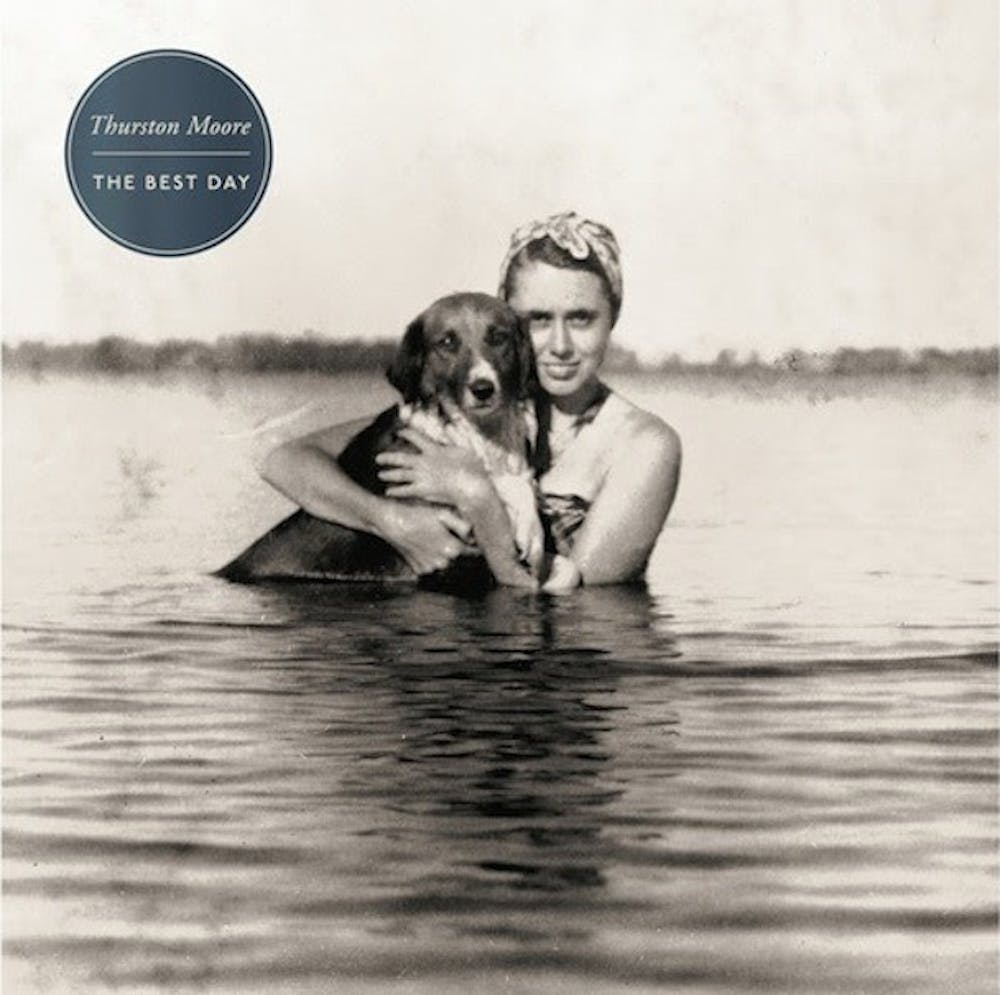Whether it is for calling out black metal or talking about his relationship with ex-lover and collaborator Kim Gordon, ex-Sonic Youth front man Thurston Moore’s face has been plastered on the Internet for weeks now. This week Moore released his new album “The Best Day” from a project named after himself — and it’s likely to keep the buzz going.
In his most recent release, Moore hearkens back to many of the stylistic elements that made Sonic Youth so great. This is most evident in opening track “Speak to the Wild” with the guitars following a chord progression similar to something one might find on the 1992 Sonic Youth album “Goo.” The rhythm and tempo is steady, and the song features Moore’s haunting voice crooning over the instruments with the same type of post-industrial, despairing vibe he so expertly conveyed in the heyday of Sonic Youth.

You can find traces of Sonic Youth all over the album with the more guitar-centric, rock-focused songs. “Detonation” features a faster drumbeat and a lyrical progression similar to “Dirty Boots” from “Goo” — subdued and haunting. “Germs Burn” contains a guitar riff that seems like the perfect logical progression for the man behind Sonic Youth to make. Taking on a sweet, nostalgic guitar riff in the opening moments of the song, it quickly transitions into a much darker, Sonic-Youth-sounding chorus, only to return to the original feeling of optimism.
It’s not all Sonic Youth, however. Tapping into the upcoming trend of trembling acoustic guitar driven music reminiscent of the throes of a Cormac McCarthy novel, songs like “Tape” and “Vocabularies” are dark and full of grit. This is an interesting stylistic choice from Moore, but, hey, it absolutely works. At no point do these tunes sound gimmicky. Instead, they seem like sincere foretellings of desert doom.
The title track of the album, “The Best Day,” is somewhat of a hybrid of the aforementioned styles. With the high pitched screeching, repetitive note bringing the listener into a closer appreciation of the song, it takes on the identity of a Sonic Youth track. But underneath it all is an acoustic, somewhat banjo-sounding bluegrass rhythm that gives the song a southwestern twinge. Moore’s vocals on the song follow this pattern as well, with them sounding fairly routine for a Sonic Youth singer, but frequently ending verses with a southern sounding accent.
The most exploratory and arguably best song on the album is “Forevermore.” Clocking in at around 11 minutes long, “Forevermore” is a murky journey through downtown Phoenix late at night with the oddities of modern society lurking behind every corner. A steady, grim chord progression guides the listener through the track, as guitar layers are added on and off, offering many spooky feels. This is only heightened when Moore’s voice creeps out of the woodwork and offers chilling lyrics about love.
All in all, the new album from the noise legend is one that tugs on the nostalgic strings that make original fans of his work happy, but throws in dark, western elements to keep the music fresh. It's another intriguing album from a great musician, indeed.
Reach the reporter at zjenning@asu.edu or follow him on Twitter @humanzane
Like The State Press on Facebook and follow @statepress on Twitter.





